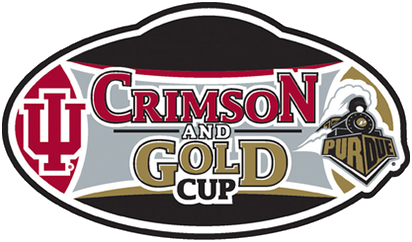With seven sports to go we have already clinched the Governor's cup.
GO IU!
GO IU!
Follow along with the video below to see how to install our site as a web app on your home screen.
Note: This feature may not be available in some browsers.
I realize it's only head to head matchups. My point is, IU offers more sports, including a men's soccer team that would be an easy win every year.Obviously you don’t know what you’re talking about. These are only head to head matchups.
All sports rivalry trophy.This is outstanding!
By the way, what is the governor's cup?

I am aware of how it works. You aren't understanding the point I was trying to make, and I am not going argue with you.Ok, you still don’t get it. It is only between sports both teams have. Men’s soccer doesn’t count.
I am aware of how it works. You aren't understanding the point I was trying to make, and I am not going argue with you.
I probably didn't phrase it well. I feel like the matchup isn't a true indicator of each university and their athletic success. I know it's a head to head only in sports both schools have.Make your point because I don't understanding it either.
I don’t care as long as our former governor does.Does our Governor know about this?...

I didn't get a harumph out if you.It's good to be the GOV!!!......Work, work, work, Work, work, work. Work, work, work..... Hello, boys. Have a good night's rest? I missed you!

Give the governor his harumph !I didn't get a harumph out if you.
Hedley: "Think of your secretary"It's good to be the GOV!!!......Work, work, work, Work, work, work. Work, work, work..... Hello, boys. Have a good night's rest? I missed you!

Like me, I know you coached a long time ( though most of mine was basketball rather than football). I gave up trying to make sense of injury patterns a long time ago. Some years, hardly any and other years a rash. I never could pinpoint causes, each serious one seemed to be unique in its cause.IU would have beaten PU if Williams didn't get hurt with no contact. I have to wonder why so many got injured with no contact unless it is the field.
I have nothing to back this, but just a thought. Is it possible that kids today are more specialized and not playing multiple sports have an effect? Muscles and joints aren't used in different ways to increase flexibility. Just something I've wondered about.Like me, I know you coached a long time ( though most of mine was basketball rather than football). I gave up trying to make sense of injury patterns a long time ago. Some years, hardly any and other years a rash. I never could pinpoint causes, each serious one seemed to be unique in its cause.
With no clear data or evidence to back me up at all, I always thought that most leg injuries in football were non-contact. My unscientific theory is that when a player gets hit, the impact typically lifts his feet off the turf ( grass or fieldturf) and prevents joints from moving in the wrong direction or hyperextending. OTOH, whether its grass or turf, when players plant and cut the foot tends to stick and the joints get subjected to excessive stress, often in an unnatural direction. It seemed to me that most leg injuries in all sports occurred when the foot stuck to the surface as a player was trying to change direction.
I'm also convinced that some of it is just related to the structure of the joint in individuals. A coaching colleague of mine had 3 kids ( a girl and two boys) who were high school athletes, each playing different sports. Every one of them had an ACL tear at least once, two of them did it twice. Dad and Mom were both high-level athletes in high school and dad was a two-sport athlete in college. Neither had ever so much as sprained a knee. Their orthopedist was certain that the kids all had structural integrity weaknesses in their knees, but couldn't offer a specific reason why, or offer any guaranteed program of prevention beyond standard exercises and common training techniques.
I agree with many of your points, IU has had devastating injuries for years without contact. I also think today's athletes have pushed their bodies to the edge in weight training putting more strain on the joints. It used to be hamstring pulls were the big injury keeping players out of games but with training it has now moved down to the joint.Like me, I know you coached a long time ( though most of mine was basketball rather than football). I gave up trying to make sense of injury patterns a long time ago. Some years, hardly any and other years a rash. I never could pinpoint causes, each serious one seemed to be unique in its cause.
With no clear data or evidence to back me up at all, I always thought that most leg injuries in football were non-contact. My unscientific theory is that when a player gets hit, the impact typically lifts his feet off the turf ( grass or fieldturf) and prevents joints from moving in the wrong direction or hyperextending. OTOH, whether its grass or turf, when players plant and cut the foot tends to stick and the joints get subjected to excessive stress, often in an unnatural direction. It seemed to me that most leg injuries in all sports occurred when the foot stuck to the surface as a player was trying to change direction.
I'm also convinced that some of it is just related to the structure of the joint in individuals. A coaching colleague of mine had 3 kids ( a girl and two boys) who were high school athletes, each playing different sports. Every one of them had an ACL tear at least once, two of them did it twice. Dad and Mom were both high-level athletes in high school and dad was a two-sport athlete in college. Neither had ever so much as sprained a knee. Their orthopedist was certain that the kids all had structural integrity weaknesses in their knees, but couldn't offer a specific reason why, or offer any guaranteed program of prevention beyond standard exercises and common training techniques.
Only the games or matches that IU and PU play against each other count. If PU and IU only played Pickleball one time during the year then that winner would win the Governor’s cup. Do you get it now?I realize it's only head to head matchups. My point is, IU offers more sports, including a men's soccer team that would be an easy win every year.
I was just making a point that it's not a tit for tat between athletic departments.
Yes, I have understood how it had worked from the beginning of the challenge, before it was called the Governors Cup.Only the games or matches that IU and PU play against each other count. If PU and IU only played Pickleball one time during the year then that winner would win the Governor’s cup. Do you get it now?
Our pickleball players would be 5.0 vs the Purdue players that would barely be 3.0.Only the games or matches that IU and PU play against each other count. If PU and IU only played Pickleball one time during the year then that winner would win the Governor’s cup. Do you get it now?
I would trade it for 8 football wins.With seven sports to go we have already clinched the Governor's cup.
GO IU!
Certainly pertinent extra training of any type can change the paradigm. Also are some kids now too fast and quick for some portions of youthful bodies? 3 more cents!I agree with many of your points, IU has had devastating injuries for years without contact. I also think today's athletes have pushed their bodies to the edge in weight training putting more strain on the joints. It used to be hamstring pulls were the big injury keeping players out of games but with training it has now moved down to the joint.
Ok….seemed like you were struggling with it. Glad I could help!Yes, I have understood how it had worked from the beginning of the challenge, before it was called the Governors Cup.
I would trade it for 8 football wins.
Can you imagine if Purdue fielded a men's soccer team (they only have women's)? How bad would IU slaughter them?I probably didn't phrase it well. I feel like the matchup isn't a true indicator of each university and their athletic success. I know it's a head to head only in sports both schools have.
It's just unfortunate that we have a dominant program like soccer, that would be an easy point every year that doesn't count because Purdue doesn't field as many sports as most of the conference.
I had class with an IU soccer player that was on the teams that went back-to-back in 03 and 04. He had a friend on PUs club soccer team, and he thought their club team was good enough to beat IU.Can you imagine if Purdue fielded a men's soccer team (they only have women's)? How bad would IU slaughter them?
I'd laugh too. The '03/'04 teams were one of the best ever in Bloomington with 8 or 9 future pros on the roster.I had class with an IU soccer player that was on the teams that went back-to-back in 03 and 04. He had a friend on PUs club soccer team, and he thought their club team was good enough to beat IU.
We both laughed a lot.
Case in point Bo Jackson dislocating his hip on a run.Certainly pertinent extra training of any type can change the paradigm. Also are some kids now too fast and quick for some portions of youthful bodies? 3 more cents!

